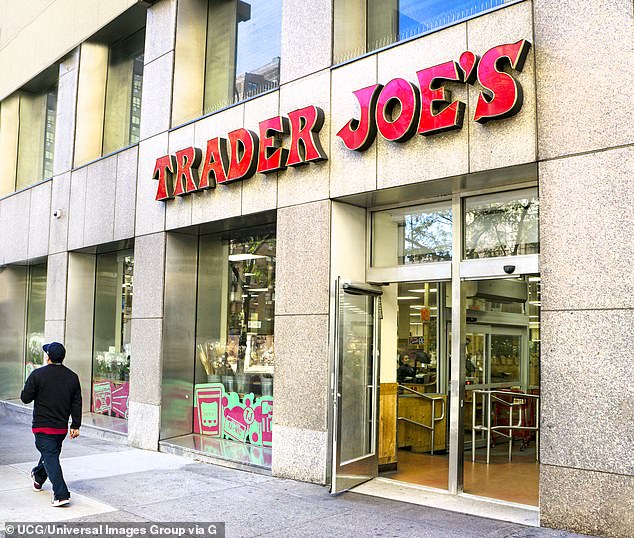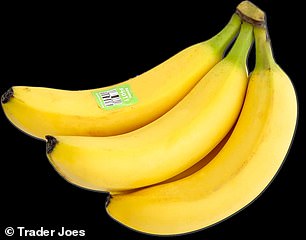Trader Joe’s has increased the price of one of its best-selling grocery items after 20 years
Inflation is bananas! Especially if you’re a customer at Trader Joe’s – which has raised the price of a banana from 19 to 23 cents.
It may only be an extra 4 cents, but it amounts to a 21 percent increase and is the first time the price has changed in more than twenty years.
In terms of quantities sold, bananas are typically the best-selling item in grocery stores – so it’s a change that Trader Joe’s value-oriented customers will notice.
The 19-cent banana is such a signature deal at Trader Joe’s that customers have voted it their favorite product a total of five times during the annual awards, including this year.
Trader Joe’s said: “We only change our prices when our costs change, and after keeping our price for bananas at 19 cents each for more than two decades, we have now reached a point where this change is necessary.”
Trader Joe’s has increased the price of a banana from 19 to 23 cents

Trader Joe’s said: “We only change our prices when our costs change, and after keeping our price for bananas at 19 cents each for more than two decades, we have now reached a point where this change is necessary.”
Americans have faced two years of punishing grocery price increases.
Even value retailer Dollar Tree said it will raise the price limit at its stores — where everything was once $1 or less — to $7.
Trader Joe’s, like most grocery stores, sold bananas by weight.
But Dan Bane, the former CEO, said that changed after she had a conversation with a “nice little lady” at a store in Sun City, Arizona.
After the woman spent time looking at bananas but walked away without buying them.
In a 2018 podcast, Bane recalled, “I asked her, I said, ‘Ma’am, if you don’t mind me asking, I saw you looking at the bananas, but you weren’t putting anything in your cart.’

The increase in the price of a banana makes them 4 cents (or 21 percent) more expensive than before
“And she says to me, ‘Sonny, I might not get that fourth banana.’ And so the next day we decided that we were going to sell loose bananas.’
Bananas have been one of the foods least affected by inflation over the years.
In America, a pound of bananas cost about 63 cents last month.
That’s just 3 cents more than a decade ago, government data show.
In terms of quantities sold, bananas are typically the best-selling item in grocery stores – so it’s a change that Trader Joe’s value-oriented customers will notice.
“Bananas are a very popular fruit among consumers, so retailers are trying to keep prices low,” said Neil Saunders, director of research firm GlobalData.
“However, prices can’t defy gravity forever and (we) are now starting to see retailers like Trader Joe’s make adjustments.”
He said one of the main reasons behind these increases is the rising cost of banana production. Fertilizer, pesticide and transportation prices have all increased due to general inflation.
At the same time, the demand for bananas is growing, he says. That creates a supply imbalance as exporters face the pressure of higher costs and a greater prevalence of disease that affects plants and adverse weather conditions.
The average American household now spends $1,080 a month at the grocery store, as two years of rampant inflation takes its toll on household budgets.
Analysis of U.S. Census data in January found that retail costs can vary by as much as $304 per month by state.
The findings, of HelpAdvisorResearch shows that grocery spending is highest in California, where the average household spends $297.72 per week – or about $1,190 per month.
Meanwhile, a recent viral video showed British high school students trying 10 cult classics from Trader Joe’s for the first time — with VERY mixed results
